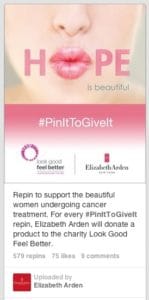 Product donations to nonprofits are one of the most common ways for companies to support nonprofits. And for at least two good reasons. First, donating product has tax advantages. Companies can deduct up to two times the cost on their tax return. So, if a company donates $10,000 worth of disposable razors and it cost the company $1,000 to make them, they can deduct two times the cost or $2,000 on their corporate tax return. Second, product donations are tangible contributions that customers and investors — not to mention reporters — can see. If you paid attention to company support for Hurricane Sandy victims in 2012 you saw lots of company trucks delivering supplies and volunteers handing out branded products to the needy. In short, the residual message of product donations is powerful public relations. For even more specific details about why product donations make sense, check out For Momentum’s previous blog post: Business Case for Product Philanthropy: ROI & Cost-Benefit Analysis.
Product donations to nonprofits are one of the most common ways for companies to support nonprofits. And for at least two good reasons. First, donating product has tax advantages. Companies can deduct up to two times the cost on their tax return. So, if a company donates $10,000 worth of disposable razors and it cost the company $1,000 to make them, they can deduct two times the cost or $2,000 on their corporate tax return. Second, product donations are tangible contributions that customers and investors — not to mention reporters — can see. If you paid attention to company support for Hurricane Sandy victims in 2012 you saw lots of company trucks delivering supplies and volunteers handing out branded products to the needy. In short, the residual message of product donations is powerful public relations. For even more specific details about why product donations make sense, check out For Momentum’s previous blog post: Business Case for Product Philanthropy: ROI & Cost-Benefit Analysis.
All this points to the likelihood that your next donation from a company will come in a box, not an envelope. The challenge for nonprofits is to find creative ways for corporate partners to benefit from the donation. The nonprofit that can best maximize a product donation will have a powerful edge with companies that are eager to do good and well.
This is where the digital pin board Pinterest can play a useful role.
Let’s use the example of a current Pinterest product promotion from beauty brand Elizabeth Arden. It supports Look Good Feel Better, a nonprofit that teaches beauty techniques to cancer patients that may have appearance-related side effects from their cancer treatments.
Elizabeth Arden started by creating a Pin-it-to-Give It board on Pinterest. For every re-pin from the board that uses the dedicated hashtag, #PinItToGiveIt, Elizabeth Arden will donate one lipstick to Look Good Feel Better.
Repins make it easy to track product donations. What’s more challenging is cutting through the clutter of the third most popular social network after Facebook and Twitter to engage Pinterest users in the promotion. Here are a few lessons from Elizabeth Arden and Look Good Feel Better.
TARGET LONG-TERM PARTNERS
The success of a promotion like this one hinges on a company that is committed and can put all of their promotional muscle into the effort. Elizabeth Arden has been a supporter of Look Good Feel Better since the program’s inception in 1988. Arden is committed to making the promotion work on a relatively new platform. You’ll need the marketing prowess of a brand to make your campaign a success.
MAKE SURE YOUR PROMOTION IS PINTEREST-FRIENDLY.
Pinterest users are looking for ideas and inspiration. A friend of mine likes to say that Pinterest is all about what you want to be. Speak to that muse as Elizabeth Arden has. Their goal in donating lipsticks is to make a beautiful person even more beautiful. Say your nonprofit provides dental care to the poor and a partner has donated toothbrushes. Use Pinterest to promote the gift, but don’t pin toothbrushes, pin pictures of healthy smiles. Don’t highlight the toothbrush, sell the results, a beautiful smile.
LEVERAGE OTHER SOCIAL NETWORKS.
For all its growth and publicity, Pinterest isn’t a standalone site. You still need a blog, Twitter, YouTube and, of course, Facebook to publicize your campaign. Make sure people understand that their repin triggers the donation and promote it everywhere!
Of course, you don’t need to use Pinterest with every product donation. Companies donate products to nonprofits everyday with little fanfare. However, some products lend themselves to a Pinterest promotion and some companies appreciate – and expect – the exposure. The key is to know when you should pin and when you should punt.
